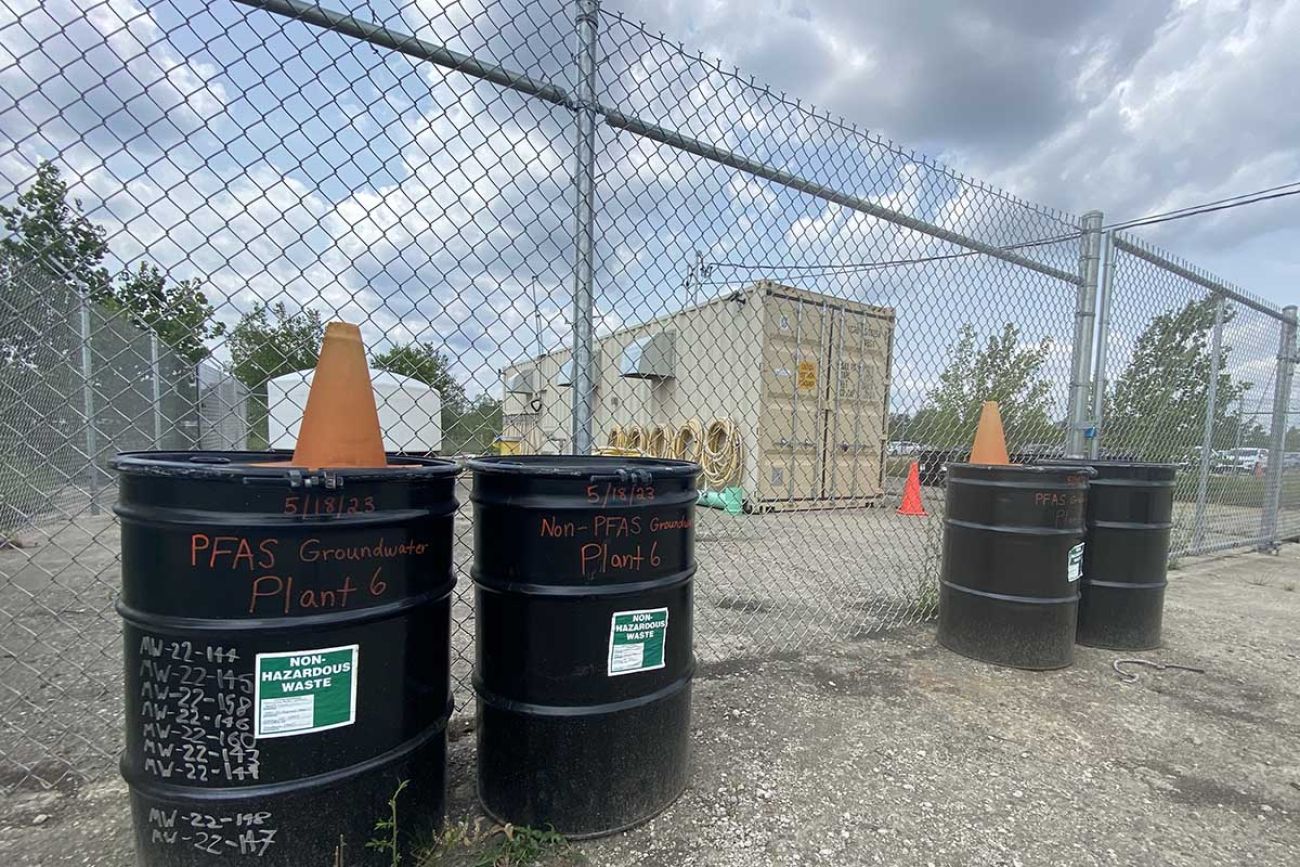How Bridge tallied $259M in public costs for auto industry pollution

- We identified $259 million in publicly-subsidized cleanups at more than 100 Michigan sites linked to the automotive industry
- That’s almost certainly a major undercount, and costs will rise as cleanups progress
- Auto sites are far from the only polluters, but they’re unique for their sheer footprint and impacts on local economies
As Michigan fights for a place in the electric vehicle future, Bridge Michigan wanted to know how much the public has already spent clearing contaminants tied to the automobile industry’s past.
Our first-of-its-kind analysis identified at least $259 million in publicly-subsidized environmental cleanups at over 100 sites linked to Michigan's auto industry.
Michigan’s industrial legacy
The latest on pollution in Michigan:
- Michigan ‘polluter pay’ bills coming, following Bridge auto industry probe
- Did auto industry pollute your Michigan town? Find out with interactive map
- Photos: See how auto companies left trail of pollution, toxins in Michigan
Repeating history:
- As automakers win incentives for EV plants, Michigan pays for polluted past
- ‘They destroyed our little town.’ What Michigan’s auto industry left behind
- With thousands of tainted sites, Michigan Dems eye return to ‘polluter pay’
- Key findings in Bridge Michigan auto project
The cost of bad policy:
A new road:
Just as important is what we didn’t find.
A lack of public information makes it difficult to tally how much of Michigan’s nearly $2.6 billion in state and federal taxpayer-funded cleanup costs can be attributed to any given industry.
In most cases, government databases that track public spending on site cleanups don’t identify which industry caused the contamination, or how much it will cost to remediate. With roughly 26,000 known contaminated sites in Michigan, state regulators say they lack the time and resources to identify the responsible party in every case, much less begin cleaning up.
Half of those sites — about 13,000 — are “orphans,” where the responsible party has died, gone bankrupt, or otherwise evaded liability, leaving taxpayers with the tab. So far, the state has started work on just a fraction of orphan sites, meaning there are likely billions of dollars more in costs that have yet to appear on state ledgers.
Still, Bridge set out to generate a snapshot, however limited, of funds the auto industry has shifted to taxpayers. Bridge analyzed 983 contaminated sites where the state has both begun cleanup work and identified the economic sectors involved.
We focused on four sectors — manufacturing, industrial, metal plating and chemical production — and pored through enforcement documents, historical records and other sources to identify how many of these sites were linked to the automotive industry.
In the course of this review, we also noticed some clearly auto-related sites that were not listed with any economic sector in the state database. One example is Autostyle Plastics in Kentwood, which went bankrupt in 1996, where the state has spent $1.9 million. Another is a still-active General Motors plant in Lansing where the state spent money responding to underground storage tank leaks.
Join us for live discussion Thursday on Michigan’s industrial legacy
On Thursday, Sept. 28 at 12 noon, Bridge Michigan business editor Paula Gardner and environment reporter Kelly House will discuss their industrial legacy reporting project. Senior editor David Zeman will moderate this interactive discussion. Bring your questions!
So Bridge searched 40 keywords such as “automotive” and “powertrain,” and added the resulting sites to our tally if a records search confirmed their automotive link.
We undertook a similar analysis for federally funded cleanups, obtaining a database of federal spending at 681 contaminated sites in Michigan. Here, we confined our search to those with a cleanup tab of $1 million or more. This search revealed at least $26.8 million in federal spending to address pollutants.
We also obtained a second state dataset of cleanup costs at General Motors properties in Michigan that the company abandoned in its 2009 bankruptcy. The bulk of that funding also came from taxpayers.
Within these limited datasets, we took a conservative approach that likely further underestimates the public financial toll. For example, we didn’t include landfills contaminated with auto manufacturing waste unless an auto company was its sole user. And we excluded many metal platers, tool-and-die operations, parts suppliers and other manufacturers that likely supplied the auto industry, but for which historical records are lacking.
Also excluded from our tally is money paid by local governments to address industry contamination, or cleanup funds awarded through special state or federal appropriations that don’t appear on the databases we reviewed.
To be clear, auto sites are just part of Michigan’s legacy of industrial contamination. The chemical industry, paper mills, mines, gas stations and dry cleaners also figure prominently. But auto industry contamination is unique in terms of its sheer footprint in Michigan, producing some of the state’s largest brownfields.
The auto industry remains a major sector of the state’s economy, even after decades of downsizing. Michigan has more auto production jobs than any other state, with more than 44,000 assembly line jobs and 123,000 parts manufacturing jobs. It has provided generations of employment to the state, earning Detroit the tag as the birthplace of the middle class.
Michigan Environment Watch
Michigan Environment Watch examines how public policy, industry, and other factors interact with the state’s trove of natural resources.
- See full coverage
- Subscribe
- Share tips and questions with Bridge environment reporter Kelly House
Michigan Environment Watch is made possible by generous financial support from:
Our generous Environment Watch underwriters encourage Bridge Michigan readers to also support civic journalism by becoming Bridge members. Please consider joining today.
See what new members are saying about why they donated to Bridge Michigan:
- “In order for this information to be accurate and unbiased it must be underwritten by its readers, not by special interests.” - Larry S.
- “Not many other media sources report on the topics Bridge does.” - Susan B.
- “Your journalism is outstanding and rare these days.” - Mark S.
If you want to ensure the future of nonpartisan, nonprofit Michigan journalism, please become a member today. You, too, will be asked why you donated and maybe we'll feature your quote next time!






